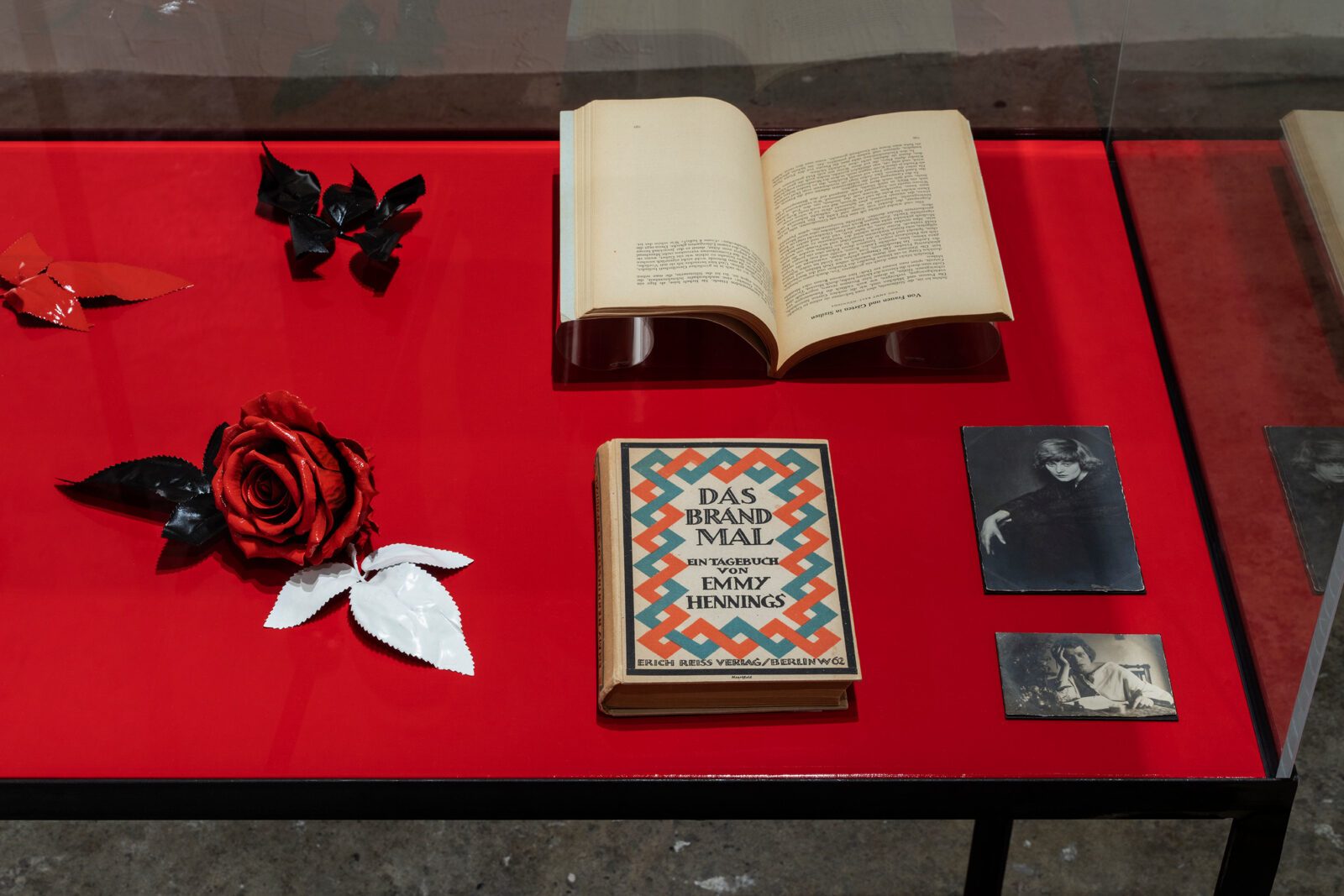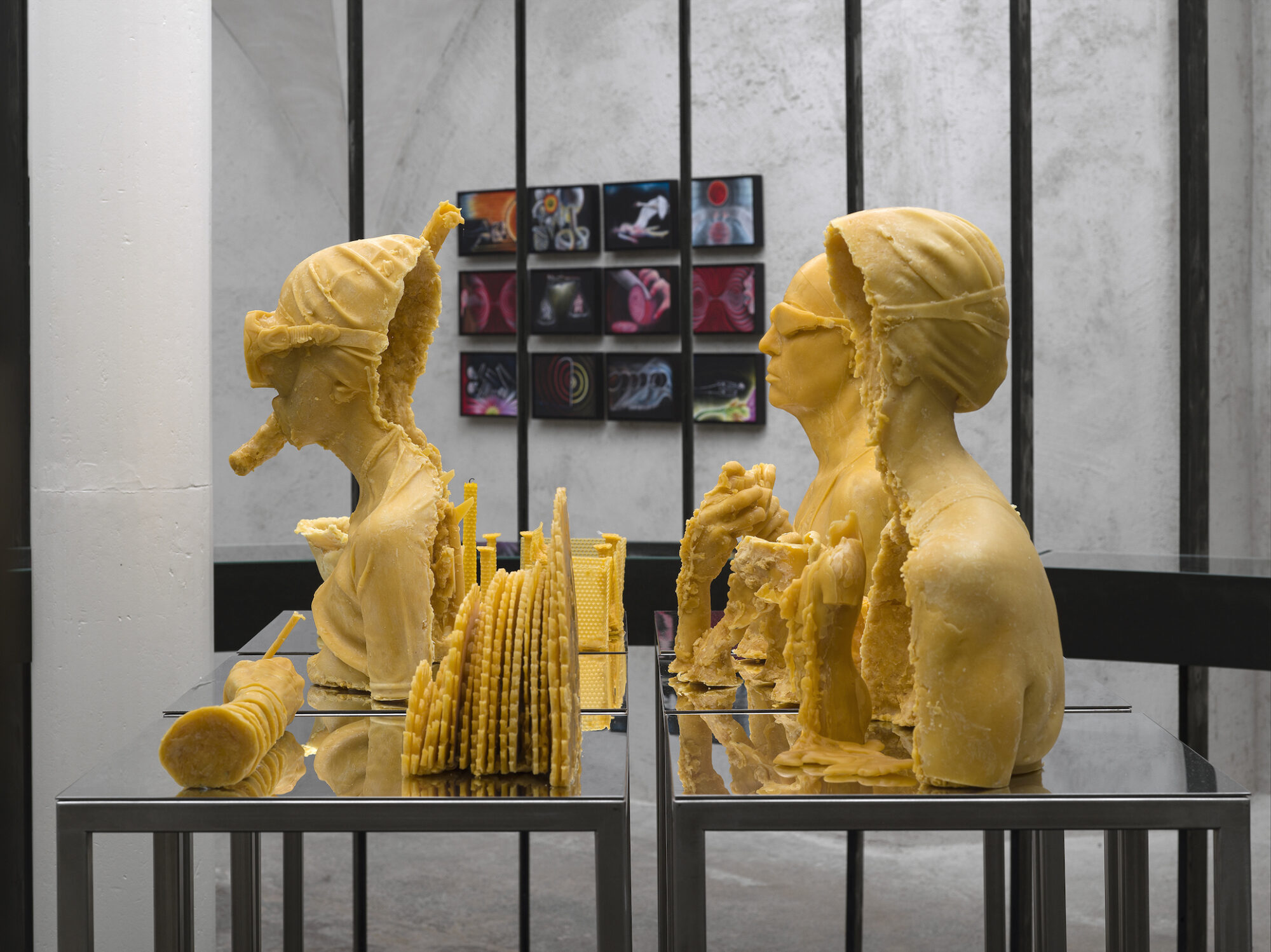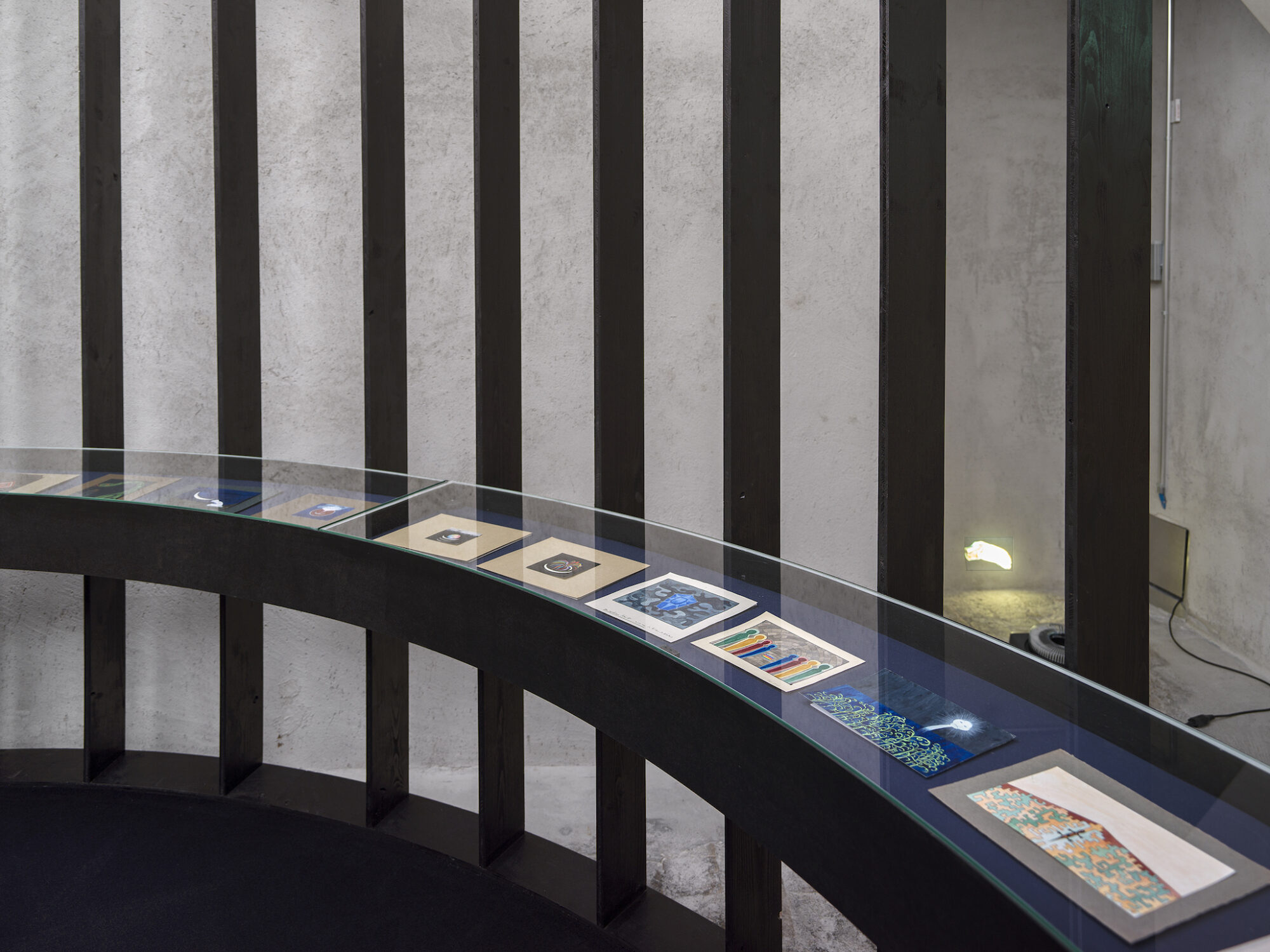
Sitara Abuzar Ghaznawi, Sculpture 1, 2020, Photo: Cabaret Voltaire, Gunnar Meier
















Emmy Hennings (1885–1948) was co-founder of the artists’ bar with Hugo Ball, and probably the most present figure at Cabaret Voltaire. The fact that she received little attention as a writer and artist may be due to various reasons. Perhaps it was the distinct language, or the general uneasiness at dealing with her Catholicism; whatever it was, her trace is missing in the male-dominated Dada historicisation. Only recently has Hennings received recognition, and indeed beyond the role of cabaret star. Whoever reads her novels, poems, and reviews will encounter a woman for whom writing was a survival strategy. She astutely analyses her existence and stages herself as a multiple. The aim of this exhibition is to examine her oeuvre seriously and to promote the opinion that there is continuity within it. For example, ecstasy and faith lie close together, and the themes of captivity and freedom run throughout her work. Motifs like the rose are recurring. For the first time, stained glass from the last years of her life can be viewed in an exhibition. In the past, little claim to art was attributed to them.
At Cabaret Voltaire, Hennings’ writings and paintings enter into an associative dialogue with the works of Sitara Abuzar Ghaznawi (*1995). The young artist stages Hennings’ literary and artistic works in showcases that can also be understood as sculptures. The exhibition display as a place of encounter and a focal point of standardised ideas is part of her artistic questioning. Ghaznawi focuses her attention on power structures, possibilities of participation, forms of aesthetics, craft and knowledge. She questions her environment from a position between autonomy and dependence, the private and public spheres, collectivity and individuality. Characteristic of her formal language is the self-made and the use of everyday, often worthless, materials. The works appear fragile and poetic, a characteristic she shares, amongst other things, with Hennings. Thus, repetitive subjects such as specific flowers, materials and patterns are also present in her work. They result from her engagement with socialized taste and circulating motifs.
Emmy Hennings, who was born 1885 in Flensburg/D and died 1948 in Soregno near Lugano, was a writer, actress, cabaret artist and co-founder of the Cabaret Voltaire and the Dada Gallery. During her lifetime, the following writings were published among others: Die letzte Freude (1913), Gefängnis (1919), Das Brandmal. Ein Tagebuch, (1920), Helle Nacht (1922), Die Geburt Jesu (1932), Der Kranz (1939). But she also wrote for magazines and newspapers (including Revoluzzer) and painted.
Sitara Abuzar Ghaznawi, born 1995 in Ghazni/Afghanistan, lives and works in Obwalden and Zurich. In 2019 she received her Bachelor at the Zurich University of Applied Sciences of Arts and presented, among others, in the following group exhibitions: Gallery Maria Bernheim (Zurich, 2019), Fri Art (Fribourg, 2019), Museum in Bellpark (Kriens, 2019), Édouard Montassut (Paris, 2019), Material Art Fair (New Mexico City, 2019). Solo exhibition: Luma Westbau|schwarzescafé (Zurich, 2019).
Courtesy works Sitara Abuzar Ghaznawi: The artist
Courtesy exhibits Emmy Hennings: Swiss National Library, University Library Basel, Swiss Federal Archive and Zurich Central Library
We thank the Swiss National Museum for sponsoring the material.

